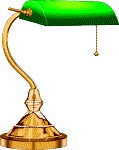JANE AUSTEN, by David Nokes.
Published by Fourth Estate Paperbacks,
UK, 1997. PB, 578 pp, $24.95.
A review copy, one I was delighted to receive.
This is a biography of Jane Austen, but in form and even in content it goes a long way beyond most of its kind. There are four parts, and 14 chapters, and these build a fascinating picture of Jane Austen, her family and her times. David Nokes has chosen to go right back to the best sources of material, Jane’s own letters, unbiased parish records and the like. He has treated the reminiscences of her family and friends with considerable caution and some cynicism, observing that Jane’s family seemed to be at pains to present her in a saintly light.
Sometimes, he quotes published comment by a relative alongside comment from Jane herself, underlining the falseness of the picture that has been first encouraged and then allowed to continue.
In some cases, Nokes mentions incidents which could be interpreted in different ways, and tracks down obscure comments from Jane that seem to show some of her ironical pronouncements or actions were taken at face value by people who should (and probably did) know better. For example, much was made by her brothers of the fact that her favourite reading matter was a long and moralising novel in several volumes.
It seems obvious that Jane did indeed love this saga, simply because it gave her such a rich target for parody and lampooning!
So, the saintly little Jane, beaming goodwill at all the world, didn’t exist. In her place, Nokes gives the reader a much more interesting person, a woman who was witty, imaginative, and sociable, devoted to her sister and a few others, but who could sometimes be cruel to those she thought of as her inferiors by birth or intelligence.
Since most of these cruelties took place in comment in private letters to her sister Cassandra, it is doubtful that her victims ever knew about them.
This streak of callousness seems to have run through the family, for an uncle and one of her own brothers were afflicted with some kind of mental retardation. Once it became clear that these two would never be “normal”, they were farmed out and virtually (except for payment of their board) forgotten by their family.
The biography is treated very much like a novel, beginning in India with Jane Austen’s uncle writing to his wife and supposed daughter in England. One by one, the family members are introduced, and, in a very novel-like fashion, followed through the ins and outs of their relationships and actions.
There are photographs and sketches of some of the characters (all contemporary) and a very detailed index.
One thing which is missing, and which I felt was badly needed, was a family tree. The Austens and their relatives formed a bewilderingly large family, and the habit of naming succeeding generations after their ancestors makes it difficult to remember who is who. There are two women called “Philadelphia”, one is Jane’s father’s sister, the other some kind of cousin. She is named “Phylly Walter” but I would have to go back through several pages to find out exactly who she was. There are two “Cassandras”, Jane’s mother and sister, and at least two “Janes”, Jane herself and her aunt (?) Jane Leigh-Perrot. Then there were the George Austens- some Jameses and Edwards, a brother who changed his name to “James Austen-Leigh” after he was adopted by wealthy relatives, and the relative who became “Mr Leigh-Perrot”, presumably to enable him to inherit property or money. There was a “Betsy”, daughter of Philadephia, who was later known as “Eliza”.
Her godfather was actually her father, and she married a French count who died in the Terror. She then kept company with two of Jane’s brothers, James and Henry.
Oh, and one of the Austen boys was known as “Fly”.
Was he really Frank or Edward?
Struggling with all these people meant I looked longingly through the book - three times - hoping for a family tree.
When I re-read this biography, which I surely will, I shall create one myself, adding to it as I read, so take warning; have a pen and paper close by when you embark.
Altogether, a fascinating, enlightening, confusing read, and one which should delight any Austen fan not too firmly wedded to the myth of Saint Jane. Details on the novels and their genesis and progress were very welcome.

 Published in Melbourne, Victoria, Australia
Published in Melbourne, Victoria, Australia